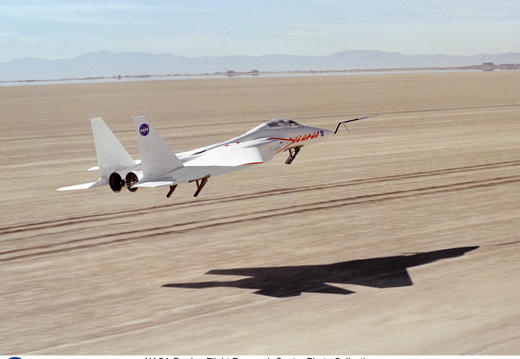
F-15A-RPRV
NASA's Drden Flight Research Center used a technique developed for flying Remotely Piloted Research Vehicles (RPRV) to flight test a 3/8-scale model of the USAF's F-15 fighter aircraft. The F-15 RPRV was air launched from a B-52 flying at 45,000 feet and was controlled by a pilot in a ground cockpit complete with flight controls and a television screen.










